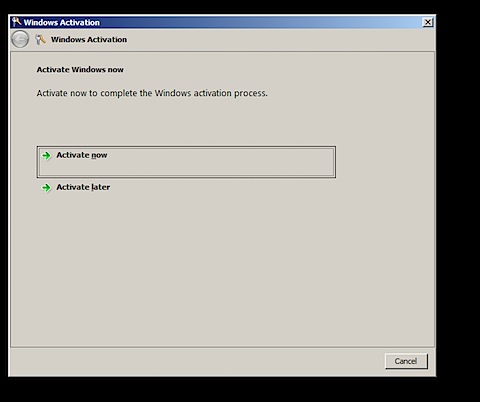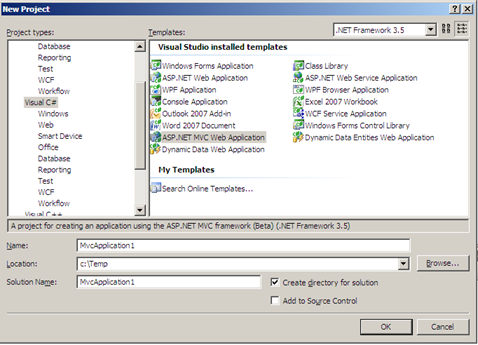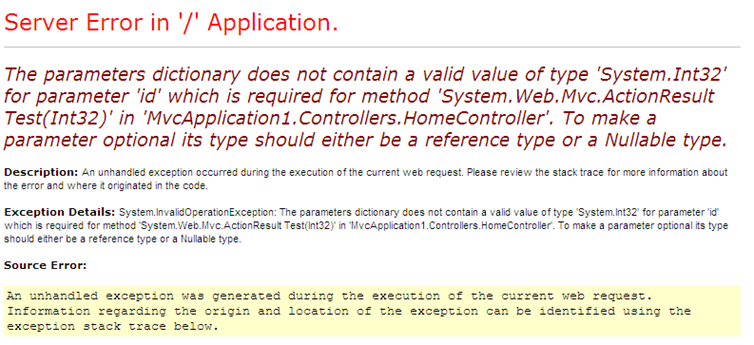This is a post about Oxite, but it is actually not about the code base. There has been a lot said about this, and I think that I can solidly put myself on the side that spouts WTF and now seeks access to memory altering drugs.
What I wanted to talk about here is actually the way that this was handled. It didn't take long for people to start noticing the actual code quality of this in contrast to its marketing promise:
We heart you so much, that we thought of everything. Oxite was developed carefully and painstakingly to be a great blog sample, or a starting point for your own web site project with CMS needs. Its line-up of sexy attributes includes: provider-based architecture allowing you to swap out database and search providers (SQL Server DB, local and Live search providers included), built for testability and hence most likely to be voted "hottest in class" by TDD fans (repositories, everything has an interface, etc.)
The community reaction was mostly negative, especially since this was positioned as official sample application. The marketing for Oxite is actually quite amazing, when you consider that they have a channel 9 show, a visit mix site, a really nicely done codeplex site, a push from Microsoft evangelist and other things that I forget.
Very quickly, there was a response from more well known sources at Microsoft. It is interesting to watch the actual phrasing of the responses from those people. You have to admire the level of verbal acrobatics that they had do do. Again, I am more interested in the back story than in the code.
Scott Hanselman has this to say about the way Oxite was released:
I don't know the Oxite guys, and I didn't know they were working on anything. Thing is, anyone at Microsoft can put a project together, blog about it, and say "this aims to be a good example of...". Clearly it's not a good example and it shouldn't be advertised as one.
The fact that PhilHa, who owns ASP.NET MVC, didn't know it was going on, kind of makes that point. Any samples from Microsoft that intend to show a Best Practice should be reviewed by Phil, and certainly vetted by the community. David Nelson nailed that point clearly.
I think that this is really interested. "Anyone at Microsoft can put a project together and..."
Well, actually, no, they can't. Oh, they can do that for personal stuff, but they can't do that for Microsoft stuff. I had the chance to work with the P&P a couple of times, and I had the pleasure of seeing the release process from their side. Some of that is unique for P&P, I assume, but there are things that are certainly shared for all of Microsoft. A security review, for example, or the bloody annoying trademark stuff that give us names such as Windows Pillow Foundation Community Extended Express Edition for Professional Database Developers And Administrators 2008 R4.2.
There are other things, and among them, especially if you put out a best practice app, is to actually talk to the team that own this.
So, they can't do that. Or, to be rather more exact, they shouldn't have done that. Except that it appears that they did, I can see no other option given the information that is publicly available. Because there is absolutely no question that Oxite has been extremely damaging to Microsoft from a PR perspective. The worst part is that it was pushed as "we thought of everything" and "hottest in class".
We can compare those to Scott's BabySmash or to Rob Conery's Storefront (although I don't believe that even at their worst, they would have made me cry). Those were clearly labeled as learning projects, and that made all the difference.
Which bring us to the current state of affairs. Scott Hanselman said something that I utterly disagree with about this:
Oxite is Open Source. If you don't like it, and there are very valid reasons today for concern, I would sincerely encourage you to refactor it and share the results.
Open Source is not a way to get other people to fix bad code. I think that this is the wrong thing to do. However it got there, this was published with the impression that Microsoft is standing behind it. While my response would have been to kill the project, remove the site and deny that it has ever existed, Microsoft has chosen to keep it alive. I believe that by doing so, and I think that they have done so by not either killing the project or officially stating that this is not a Microsoft project, that Microsoft is now accountable for this project quality and its fitness to serve as an example application.
And yes, I do mean that what looks very much like a rouge project being released into the wild is now Microsoft's problem to fix. See above for the difference between stating the source (Microsoft vs. individual) and the effect that it has on the perception of the project.
Rob Conery's has picked up the ball and seems to be making rapid progress at it, judging from his twitter stream.
I think that this is the best solution all together. We get to see a good restructuring approach, and knowing Rob, we will end up with a good sample app. More to the point, that was the appropriate response to what happened.
It also has another side effect, which is pretty major one, it turning all that negative PR into a positive one, by stepping in, acknowledging the problems and fixing them.











